#Nunobiki
Text

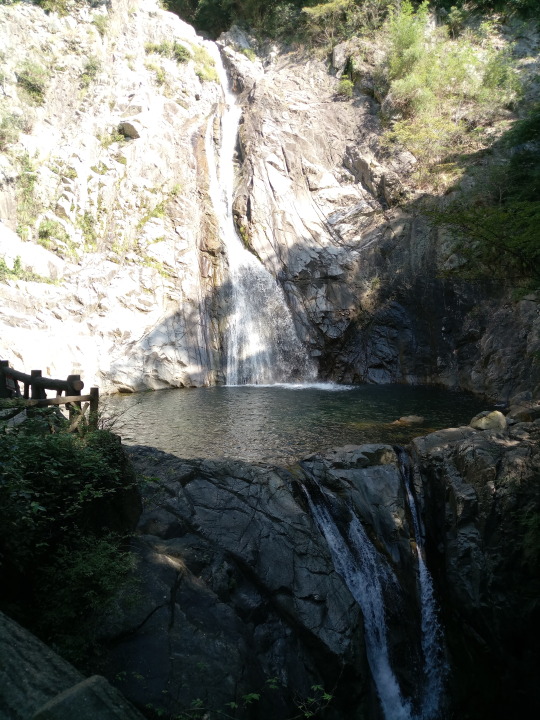
Nunobiki Falls, Kobe, Japan
47 notes
·
View notes
Photo
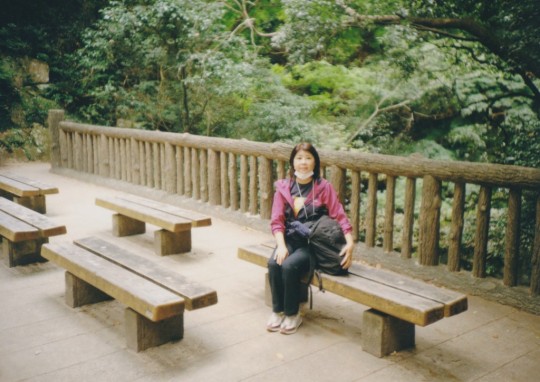
布引の滝
52 notes
·
View notes
Photo

🌅 Sunset over Kobe City
22 notes
·
View notes
Text
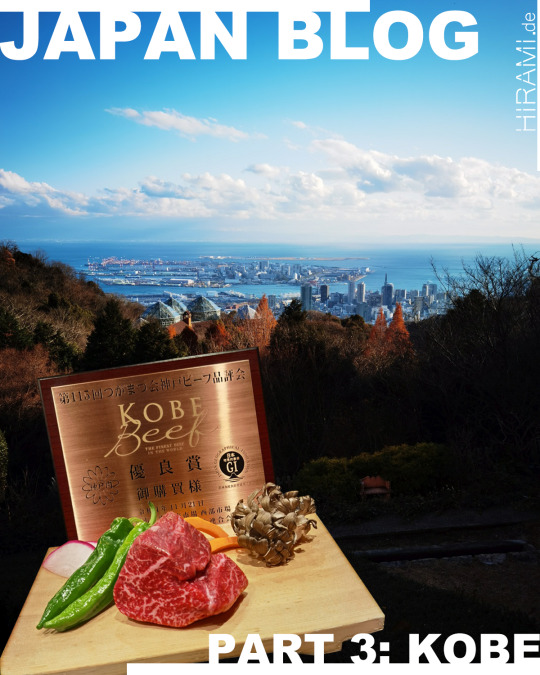
With only a year of delay 🥁….
Japan Blog Part 3: Kobe 🥩
➡ hirami.de/kobe
3 notes
·
View notes
Text
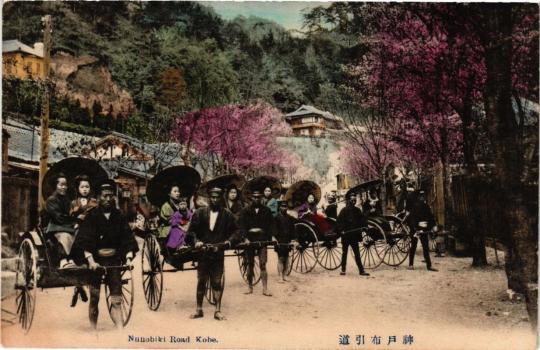
Nunobiki Road in Kobe, Japan
Japanese vintage postcard
#carte postale#old#ansichtskarte#photo#vintage#postkaart#road#photography#japanese#briefkaart#postkarte#ephemera#postcard#sepia#nunobiki road#postal#kobe#tarjeta#nunobiki#japan#historic
10 notes
·
View notes
Photo

眼下に広がる扇港 #神戸 #kobe #布引 #nunobiki #神戸布引ハーブ園 #ロープウェイ #ropeway #cableway #索道 #로프웨이 (神戸布引ハーブ園・ロープウェイ) https://www.instagram.com/p/CgA6jo_Lej_/?igshid=NGJjMDIxMWI=
0 notes
Text
June 18, 2023 - Day 173
Kobe, Japan
Kobe is a city in Osaka Bay in central Japan. It is a beautiful city surrounded by mountains that frame the harbor. There are many high end fashion stores and the Japanese say “If you can’t go to Paris go to Kobe.”. With a population of 1.5 million people it is Japan’s seventy largest city. It is most famous for its Kobe beef which we enjoyed for dinner. It is the site for Japan’s first golf course and it was the first city bombed by the Americans during the Doolittle raid during World War II. They are fanatic about baseball and there are billboards all over the city for the Orix Buffaloes who are first place in the pacific league.
There is an extensive railway, bus and subway system and I wanted to try it. We bought a ticket for a hop-on-hop off bus and went to the train station. I had heard of the “Hakutsuru Sake Museum” so we made an attempt to go. Every thing is in Japanese so it was a challenge to figure out how much to pay, how to buy a ticket, figure out what track to go to and then what train to get on but by pointing at a map and head shaking we got there. I posted some photos below.
One of the stops on the bus was labeled “Herb Garden” so we thought we would see that. We expected a small garden but was I ever surprised. We walked up the hill a bit and there was an elevator which we got on. At the top was a long line waiting for another elevator to a place called the “Kobe Nunobiki Herb Gardens and Ropeway”. We got to the elevator and it took us up to another line to buy a ticket to ride the ropeway which is actually a gondola that takes you to the top of Mount Rokko. Once on top you are treated to an incredible panoramic view of Kobe and you can see all the way to Kyoto which is 20 km away. The ticket was the equivalent of $13 for a round trip. When you get to the top you walk down a half mile brick path to a lower gondola station where you take a car back to the bottom. The place is Japan’s largest herb garden with over 75,000 herbs and flowers. There are 12 different gardens areas that have different themes. There is also a high green house where you can have lunch. I put some photos below.
Kobe was one of my favorite places to visit on this trip.







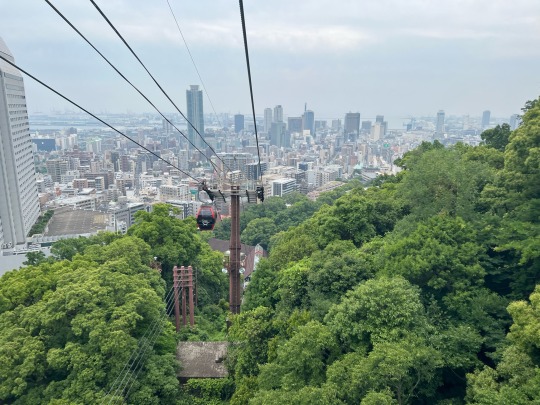


2 notes
·
View notes
Text
VƯỜN THẢO MỘC KOBE NUNOBIKI
Một chuyến đi cáp treo kéo dài khoảng 10 phút sẽ mang đến tầm nhìn ấn tượng ra quang cảnh Kobe bên dưới. Trên đỉnh núi, cao khoảng 400 mét so với mực nước biển, là Vườn thảo mộc Nunobiki, một trong những vườn thảo mộc lớn nhất ở Nhật Bản, trưng bày 75.000 loại thảo mộc và hoa của khoảng 200 loài khác nhau nở quanh năm. Có 12 khu vườn khác nhau với các chủ đề khác nhau, nơi bạn có thể dành thời…

View On WordPress
0 notes
Text


Hide Kawanishi, Nunobiki Water Fall, before WWII
front and back (print through)
217 notes
·
View notes
Text
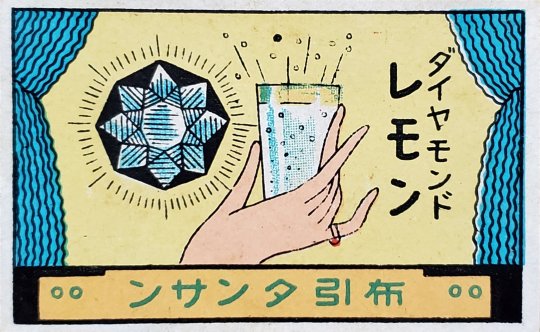
Advertisement for Nunobiki Kosenjo "Diamond Lemon Carbonic Acid
51 notes
·
View notes
Text



23 notes
·
View notes
Photo
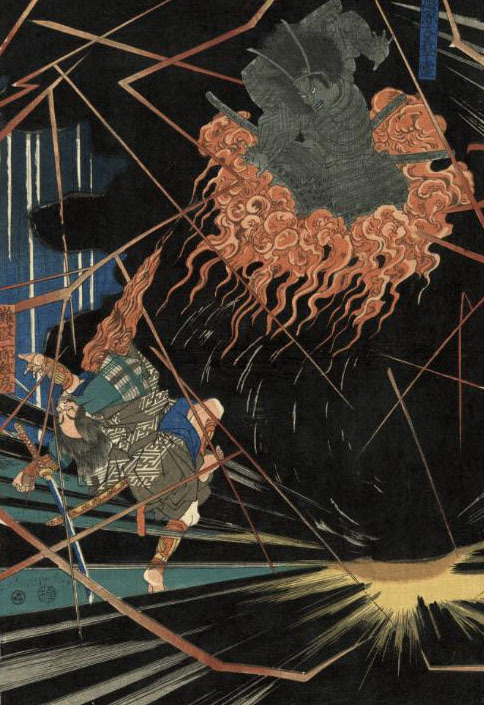

Utagawa Kuniyoshi - Taira no Kiyomori encountering the ghost of Akugenta Yoshihira at the Nunobiki Falls c.1825
270 notes
·
View notes
Photo


🚡 Take the cable car to Kobe Nunobiki Herb Gardens and get a beautiul view over the city! Hiking trails, herb gardens and a foot bath make for a perfect evening 🌿
2 notes
·
View notes
Text

Nunobiki Falls, Mie, Japan.
Hisanori on flickr
17 notes
·
View notes
Photo
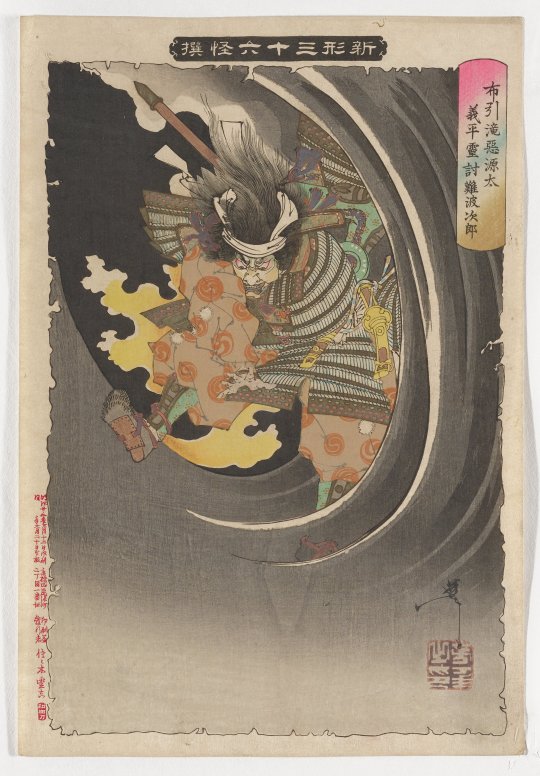
Akugenda Yoshihira’s Ghost Attacking Nanba Jirō at the Nunobiki Waterfall, December 1889
Tsukioka Yoshitoshi; Publisher: Sasaki Toyokichi; Carver: Wada Yūjirō
Woodblock print (nishiki-e); ink and color on paper
MIA
50 notes
·
View notes
Text
Spitballing an alternate timeline
Imagining a different Philippine Revolution.

July 9, 1896. William Jennings Bryan, a populist (and avowed anti-imperialist), campaigns for the United States presidency. He was making his "Cross of Gold" speech. While popular, it wasn't enough to win him the White House. A party tied to his candidacy, the People's Party, petered out. The urban electorate seemed alienated by him. Maybe it's because of something in the speech:
"Burn down your cities and leave our farms, and your cities will spring up again; but destroy our farms, and the grass will grow in the streets of every city in the country."
August 23, 1896. After being discovered, the Katipunan convened in Pugad Lawin. Tearing their cedulas, they began the Philippine Revolution. Most Filipinos tend to know how it went. The leader of the Katipunan, Andres Bonifacio was overshadowed by Emilio Aguinaldo and later executed. After a protraced war, Aguinaldo made a pact with the Spanish to go to Hong Kong in exile. The Revolution came back in full swing during the Spanish-American War, declaring independence from Spain and a republic. It eventually got curbstomped by the United States after buying the Philippines from Spain who sold it to save face. Aguinaldo surrendered. The rest, some say, is history. It's a pretty horrible one.
So like, what if it wasn't?
Heavily armed zoomers isekai'd to the Victorian times
POD: In July 9, 1896, Bryan does a quick fib and doesn't say the aforementioned line in his "Cross of Gold" speech. He wins big in the elections. Now, here is where it get's absurd.
At the exact same time in the other side of the two young Filipinos from the future, an Anarchist and a Marxist, wake up in the past, in Balintawak. They have nothing in common other than a) they're well read on history, and b) have lofty, albeit conflicting visions for the country. With them is a big shipping container filled to the brim with M14s, Chinese AK-47s, RPG-2 rocket launchers, and enough ammo to last over a year.
They have no idea how it got there, no idea how they got there, or who one another is. But this gives them an idea.
In days, our time travellers (aka the "uptimers") meet Bonifacio and talk to him about the cache. The guns were demonstrated in private, and offered training in the new arms. The two are inducted into the Katipunan, and eventually, endeared themselves to its leadership's inner circle as advisors.
The Light of Liberty shines upon the East
The Revolution proceeds as scheduled. The Katipunan is discovered, mass arrests and crackdown lead to anti-Spanish riots and sentiment, the Cry of Pugad Lawin happens. The Katipunan wins San Jose del Monte after ambushing Spanish reinforcements. A mix of modern guerilla tactics, firearms, and the power of hindsight allowed for more victories around the "Eight Revolting Provinces".
As Spain sustains losses, native regiments defected and throws Madrid into disarray. Jose Rizal would be freed from Fort Santiago, but states that he wouldnt join the Revolution. Without the losses that led to Bonifacio's downfall in the Tejeros Convention, a different convention in Calamba confirms the Tagalog Republic as is, united under a triumvirate of Rizal, Aguinaldo and Bonifacio (Aguirizbon). They establish local governments, held elections and dialogue with the people under revolutionary rule.
Delegations to the United States, China and Japan were organized, years earlier than IRL. This becomes a factor for Bryan's administration to intervene in the Philippines during the Spanish American War. Thanks to greater anti-imperialist sentiment in both the public and Congress (albeit colored by anti-immigration rhetoric), notions of invading the country is more easily dismissed. Thanks to greater successes on the ground, support from fellow East Asian countries is magnified, from arms shipments (see IRL Nunobiki Maru) to volunteers from the Revive China Society and Japan.
By 1898, the Revolution has the upper hand, even taking some ships from the Spanish. It had also spread to all parts of the country; In Zamboanga, Katipunero Vicente Alvarez manages to unite the Lumads, Christians and Muslims to siege the Spanish stronghold in Mindanao. In Iloilo, the comite conspirador forms a provisional government. In Negros, a mock military march was all it took for the Spanish to fold. A three-front maneuver from the south in Cavite, the north in Bulacan and the east in Morong (modern Rizal province) attack Manila. A final push sieges Intramuros and finally takes the city. A declaration of independence, drafted before the final push, is signed on June 12, 1898 in the Manila Cathedral.
America still deploys the Asiatic Squadron to the Philippines and, after a standoff with the German Navy, batters what is left of the Spanish Navy in the Battle of Manila Bay. Seeing Manila fully controlled by a "Tagalog Republic", the better perception spurs the American forces to negotiate with the Filipinos. Spanish control over its Empire ended in 1898, after an alternate Treaty of Paris recognized Cuban and Filipino independence. Since the United States still wants something out of this, Washington and Manila agreed for trade privileges and a naval base in Subic.
While independence is ensured, internal cohesion was still a pressing matter. The Tagalog Republic still relied on the Katipunan's bylaws (the dakilang kautusan) and the governments in Visayas and Mindanao, while pledging allegiance to the Katipunan, sought autonomy. A national convention was held and agreed to a federal system comprising the states of Luzon, Visayas and Mindanao. A special status for the Moro sultans was stipulated, and Sulu, by dint of legal succession, remains a protectorate of the new nation. In 1899, in a Congress held in the Ayuntamiento de Manila, the Philippine Republic is declared in Spanish, Tagalog and Hiligaynon.
Immediate ripple effects
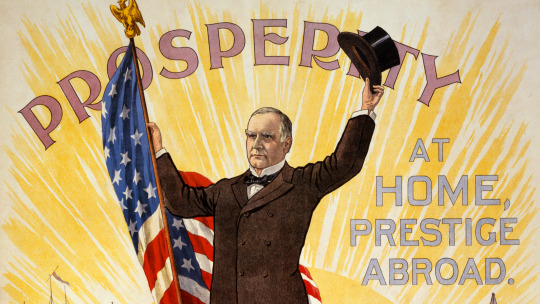
In America, Bryan's populist credentials opened the floodgate for other progressives to rise to prominence, from John Peter Atgeld, Henry George, Daniel de Leon to Eugene Debs. Bryan is still however hobbled by his government; parts of his agenda, such as rail regulation and banking reform would still have passed. With a tempered (but still assertive) foreign policy and a public receptive to populist ideas, much of the hallmarks of American imperialism and the surveillance state wouldnt take shape. Hawaii's annexation is averted, though it remains a special territory under an alternate Jones Law.
Urban migration is slower thanks to Bryan's rural leanings. Labor and class conflicts remain conventional and increasingly skewed in favor of workers. Later red scares are weaker and and civil rights causes are more popular despite Bryan's ties to Southern Democrats. A stronger Industrial Workers of the World is founded in 1905, competing with the American Federation of Labor for dominance and backing both Populist and Socialist Labor parties. With Populist Eugene Debs reaching out to George and de Leon, and the IWW's electoral backing, an old alliance is rekindled: the United Labor Party.

Back in the Southeast Asia, guns seized from the Filipinos surprised involved Europeans. How did backwards "indians" get ahold of such weapons? A new arms race begins; with auto rifles and submachine guns from WW1 and WW2 being invented decades before IRL. Japan even converted their bolt action rifles to semi-auto to stay ahead of the curve. The warfare of 1896 would be unknown to Europe until much later, however, with Russia still losing to Japan in 1905 (with minor help from the Philippines). Other technologies were much more freely given, such as when the uptimers, while visiting the US for the Olympics, sold Thomas Edison a license for their electric engine (see next section), while introducing Nikola Tesla to the transistor.
Licking their wounds from the Boxer Rebellion, the Qing Dynasty's continued resistance to change kept them at risk for unrest and invasion. The Xinhai Revolution happens as scheduled; with the lessons of the Philippine Revolution still fresh in their minds, the Tongmenghui (United League) organize a stronger Republican force. An agreement elects Qing general Yuan Shikai as president, though later sidelined by a still-living Song Jiaoren as prime minister. The Chinese Republic would later rebuild and develop, eventually giving Tibet, Mongolia, the Muslim lands and Manchuria autonomy under the principle of Five Races under One Union (wuzu gonghe). Korea however remains taken over by Japan, though due to Ito Hirobumi surviving (his would-be assassin dying sometime in the Russo-Japanese War) and clamor from Koreaphile sentiment at home and overseas, the Treaty of 1910 instead led to a personal union, with Emperor Meiji becoming the ruler of a Japanese-Korean Empire (to the tune of Austria-Hungary).
The events in the far east prompt Amsterdam to enact a more thorough Ethical Policy in their East Indian colony (modern Indonesia), fearing that poor conditions of the natives might lead to an equally devastating revolt. Education and public services are rendered to the natives more greatly, and while the Philippines assured that they have no interests in spreading influence into the DEI, the Dutch still tried their hardest to integrate Indonesia to their sphere. For the Filipinos, they simply encouraged wholly political activism down south—a diplomatic overture, essentially agreeing with the Dutch thesis that violence and "separatism" is an outcome of social neglect.
Developments in the Philippines
With Bonifacio, Jacinto and Rizal alive, they are able to formulate a distinctly Filipino politics after the Revolution. Jacinto completes his work Liwanag at Dilim (Light and Dark), forming a basis of a populist and Marxian liberalism called democracia nacional. The Katipunan dissolves in 1900, divided between Aguinaldo's and Bonifacio's factions. Rizal, fearing a crisis, refounds the Liga Filipina as a kingmaker party and a "check" on the states and parties. His fears, fortunately, would not come to pass; the government, in direct continuation of the old Tagalog Republic before it, proved stable.
Friar lands were redistributed, while pro-Revolutionary landlords in Luzon were encouraged to sell their lands and build industry in the cities through various incentives. Loyalist haciendas were broken up and awarded to Katipuneros. Some, like in Negros, managed to keep their lands in exchange for continued loyalty to the Republic. Most of the incentivized landlords transitioned well into new businesses, largely in brewery, tobacco and manufacturing raw materials, backed by American, European and Japanese investors. By 1905, the Philippine economy was booming and cities growing, thanks to a transitioning agrarian-industrial economy, exporting cotton, textiles, coffee, tobacco and sugarcane.
Industrialization was still a pressing issue, as uptimer advisors scrambled for ways to help the government catch up with its neighbors while maintaining the environment and keeping the growing business elites in check. One such effort was to push for nationalization schemes and labor regulations, including the institution of "national workshops" to guarantee employment and spur industry. Major infrastructure projects such as hydroelectric dams in Angat, Ipo and Caliraya became national priority to electrify the islands.

Despite this, both have used their party apparatuses outside Congress (the Marxist joining Bonifacio's party, the Anarchist Rizal's) to ensure their economic visions would come to pass should reforms didn't. The Anarchist uptimer went around the country to teach and found industrial cooperatives (farm tools, machinery, bicycles and guns), credit unions and schemes to buy and distribute surplus rice all around the country; while the Marxist helped found farmer's associations and labor unions, even organizing factory-workshops owned by said groups. These schemes often went in conflict with the haciendero conglomerates; the political system slowly began skewing and pillarizing, between the rural Aguinaldists, the urban, populist Bonifacians and the "cantonal" Rizalists.
Using future knowledge, the uptimers sought to create means for industry and communications in rural communities, from small-scale water turbines, earlier solar panels, efficient flow batteries, CB/ham radio (a similar device would be patented by Nikola Tesla), and LED lamps, to more low-tech solutions such as hydraulic power or pedal-powered systems and machinery to support and develop local economies as per Kropotkin's suggestions. Their greatest invention, a multi-use electric motor based on modern EV tech was manufactured and used for power generation by the cooperatives themselves to help with the manufacture of cheap but sturdy machinery. The invention of e-bikes would later lead to the proliferation of EVs in the country, defined by motorized pedal cars.
Philippine growth was modestly positive throughout the 1900s, though cultural ingenuity (discarte) and the uptimers adopting modern methods ensured that the country would make the best of it; fostering a thriving internal market while still profiting from exports. In the international stage, the Philippines gained prestige as a trade nexus between the East and the Americas, a veritable link that gave them the moniker the "Gate to China". With an economy based on people and an political system skewing populist, the inequality seen in Japan (ie. Zaibatsu) is largely muted in the Philippines.
Unlike in the Dutch East Indies (whose nationalist movement was still in its infancy at the time) Filipino radicals were much more inclined to interfere in the British and French empires, even secretly aiding groups such as the Jugantar, the Ghadar Party and the Quang Phuc Hoi. Linking with Pan-Asian groups in Japan and China, they established a clandestine political network that held a common, anti-colonial agenda.
Butterfly chaos in Europe
In Europe, the effects were profound. After Spain in 1898 lost against the Philippines (and Cuba and the US), Russia followed in 1905 against Japan, and then Italy in 1910 against the Ottoman Empire. All said countries suffered turmoil, especially Russia, whose loss marked the Empire's slow decline until their revolution. Spain had a dramatic transformation in the interim; pivoting to its remaining holdings in Africa, but later falling to its own uprising in 1914 after protests against conscription in their 1913 war in Morocco. Italy was essentially bankrupted by their 1910 escapades in Libya, and by a stroke of poor fortune, decisively lost against a plucky Ottoman Navy, leading to radical polarization between the Left and Right. In all cases, alongside China's own revolution, signaled to the West that Eastern Powers were on the rise.

The Young Turks manage to prevent the coup of the Sultan Abdül Hamid II, forcing his abdication and the Ottoman Empire swinging fully to democracy. While discrimination remains a problem, the Armenian Genocide is averted, and the Ottomans even federalized, allowing for Armenians, Romans (ie. Christians west of Constantinople) and Arabs to attain nationhood while still under the Sultan. The relative stability afterward becomes key to keeping the Balkans and winning against Italy, who, after losing the Italo-Turkish War, fully integrated with its Triple Alliance with Germany and Austria-Hungary.
The ensuing Spanish Revolution of 1914 (often referred to as the "Second Cantonal Rebellion") led to the second Spanish Republic (and inadvertently, the Portuguese Revolution). Their disavowal of all colonial holdings opened a vacuum that would be fought betwern France and Germany the following year. A fatal naval standoff around the Straits of Gibraltar between the two powers leads to the Great War in 1915.
Great War, Red Triennium
Due to the nature of the "Gibraltar Incident”, both the Ottomans and the Russians stayed out of the war. Even a neutral Philippines implored Japan-Korea and China to follow suit. However, due to new developments in the arms race, the war still proved devastating and wide-reaching. The Americans, largely ambivalent over the war, remained entirely neutral, only giving the Entente financial aid through loans. Germany, long interested in keeping the Entente bogged down, began to support nationalist movements in India, Indochina and Ireland, with tacit assistance from China and the Philippines. When the War became more brutal and that of attrition, Germany also mulled fomenting chaos in its unstable east.
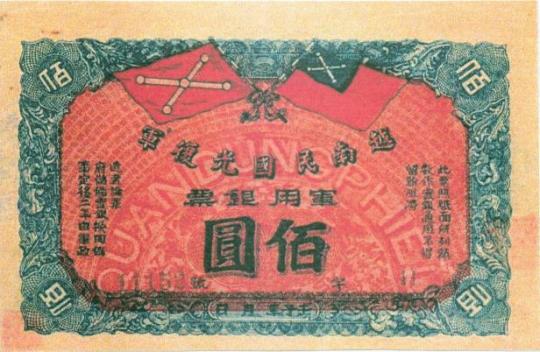
Britain and France hoped that Russia would join the war to turn the tide for the Entente. Due to the war, however, foreign investments have dried up in Russia, leading to significant economic distress. Public opinion was largely against joining the war, seeing it as a conflict between "Western nations". However, in late 1918 Russia was beset by another 1905-style wave of unrest due to the Czar expressing intentions to join the war, Germany organized to send an entire trains' worth of Russian political exiles to exacerbate the situation and essentially keep Russia out of the War. Among them is Vladimir Lenin.
Unlike 1905, by 1919 the Russian government have collapsed, and the Romanovs put into house arrest (later exiled to Canada in 1921) by the provisional government. Due to the presence of other figures, from Anarchists to Mensheviks to rival Bolsheviks to Socialist-Revolutionaries, Lenin wasn't in a position to foment a Bolshevik takeover as he would IRL in 1917, instead the Revolution plays out as a contest between the Provisional Government and the soviet-backed Constituent Assembly, with the latter winning. Without the October Revolution, most parts of the Russian Empire, save for (parts of) Turkestan, Transcaucasia, Poland and Finland remain in Russia as full-fledged states, while other ethnic groups establish new ones, such as the Tungus and Mountain Republics.
Inspired by the events in Russia, frustrated over the Flu Pandemic (called the "Kentucky Flu" since it was first recorded in the US instead of Spain) and struggling with the stalemate of the war, both Germany and France fell to strikes and mutinies months after a pressured Viktor Chernov convened Russia's Constituent Assembly. The "Strasbourg Commune" was declared by mutineers on both sides as they began to turn on their commanders, the first sign of revolution. While a truce was called by their governments, it was too little, too late.
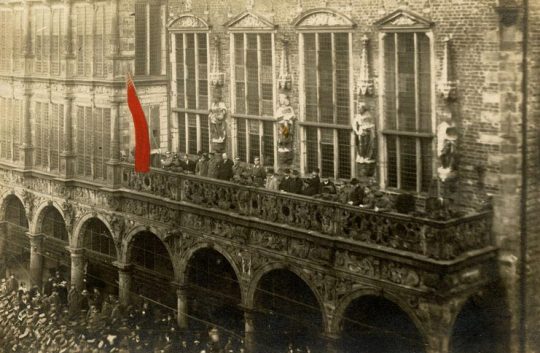
All of Europe collapsed over mutinies and strikes in a span of 3 years, hence being named the "Red Triennium" of 1919-1921. First was France, Germany and the Low Countries. Left wing groups began to act; a living Jean Jaures, sensing the tides, sided with the mutineers and strikers, while the CGT called for a "Second Commune". The German Social Democrats, including Rosa Luxembourg, also seized on the opportunity. The absence of Friedrich Ebert (dead in 1914) allowed the Social Democrats to lean into the emerging "Worker and Soldiers' Councils". By 1921, what is left of the German Empire has fled to a rump East Prussia, while France managed to retake Algiers the same year.
In 1920, Italy, the Low Countries, and Britain followed in the domino effect. Italy was beset by polarization for a decade; Mussolini died in the Libyan War, in his place the more radical National Syndicalists emerged: his friend Filippo Corridoni. Allying with the nationalists of Gabriele D'Annunzio and the Communists of Antonio Gramsci, the nascent "Italian Social Republic" took over the country in an earlier and more violent March on Rome, later backed by the Franco-Germans to consolidate their power in Italy. In Britain, a contentious general strike turns violent after Prince Edward in Black and Tan clothes shot a civilian. As the strikes become revolutions and London overrun, the second British Commonwealth was declared in 1921. In the Netherlands, the Red Week is much more successful, effectively forcing the Dutch to leave for Batavia (modern Jakarta).
The resultant socialist states of Europe would later form an alliance during the 1922 Extraordinary Congress of the Socialist International; France, Germany, Austria and the Low Countries in particular agreed to form a USSR-like union called the Social Federation of Communes, the constituent states renaming themselves as such. Europe has been turned upside down, but the cascading effects of the war weren't done.
They really weren't
Suddenly cut off from Europe in 1921, the United States quickly fell into an economic depression. By this point, the ULP's Populist-Socialist alliance—held together by the IWW and the party leadership—has since formed a concrete social pillar, comprising a pillarized quasi-countersociety through union-owned factories ("Wobbly Shops"), credit unions, tenant unions, cooperatives and a strong bloc in Congress.

Years prior, in 1918, the country had suffered a general strike and a wider era of discontent (the "Red Summer of '18") after the conservative Democratic administration expressed a desire to join the War, a punitive labor law was passed, and ULP candidates-elect in New York City (including a Populist mayor) were physically barred from being sworn in by Tammany Hall goons with tacit approval of the President. Most of the striker's demands were fulfilled after backdoor negotiations with the ULP in Congress; repealing the law, affirming neutrality and allowing the NY ULP to be sworn in. It showed the strength of the Populist bloc.
While the Bolshevik revolution IRL led to a red scare, the ensuing depression after the "Red Tide" of Europe was easily and squarely blamed on the President and the "robber barons". The ULP-IWW members and voterbase largely cushioned from by quasi-countersociety institutions, used their relative benefits to campaign, winning the LaFolette-Debs ticket in a very contentious 1924 election by a whisker. The election of "Reds" prompted American proto-Fascists—the militarist American Defense Society—to concoct an earlier Business Plot, led by general George Van Horn Moseley. Just a year in office, they immediately overtook the White House, killing LaFolette in the process and staging a coup.
The surviving cabinet reconvened elsewhere and agreed that a Second American Revolution is necessary. The IWW immediately mobilized its unions and shops into a war footing, reorganized its security forces into an army, and the Home and National Guards were called upon in ULP and other loyalist-held states "to defend the Union". The Second Civil War lasted two years; in July 5, 1926, with European volunteers and aid, the Unionists retook Washington DC, and a new constitution was ratified. Holding direct continuity with the old US (keeping the flag and government), the new America is still an ostensibly Socialist one, with the economy organized along the lines of Daniel DeLeon and Henry George. Among other reforms, the Senate was abolished in favor of a syndicalist chamber for the Industrial Unions, and the Electoral College is done away with. Treaties with key Native American tribes are reaffirmed, and some, such as Alaska, Oklahoma and the Navajo were admitted to the Union as states. In 1927, after the refoundation and second Continental Congress of the United States, they aligned themselves to the Socialist International in Europe.
The world, by the 40's
The Philippines has become a stable and independent republic, one directly descended from the Katipunan. Industry is distributed throughout the country while urban density is embraced; thorough land reform and land use kept the dense forests and other natural habitats of the country flourishing. Due to its presence and influence, it managed to maintain a clearer link between East and West, sporting a composite, pluralist, and almost Swiss-style identity where it is both Hispanic and Asiatic. Economic interventions early on prevented the inequality defined by Korean Chaebols and Japanese Zaibatsu from taking shape, offering a counterpoint to Japan's more elitist vision of Pan-Asianism. The (admittedly) haphazard federal structure has also allowed for better rights and representation for indigenous peoples as they are able to appeal to states more receptive to their plight instead of a faraway centralized government.
There is no WW2 but wars continued to happen in that period; from the 1940 Amazon Wars between Colombia and Brazil, the 1930-40 "War of Three Suns" contest between Japan-Korea, the Philippines and China, the 1940-1944 Indonesian National Awakening, the Sino-Russian War of 1938, the Indian Unification of 1936, and Liberia's wars of conquest from 1923-28. For most of the time, the new world-system has largely set.
The West, defined as the Europe and the Americas (minus Brazil's sphere) are defined as a wholly Socialist bloc. Unlike the dogmatic and centralized USSR, the Social Federation acts more like Australia, and are largely defined by the tension between Syndicalist unions, worker councils and the Socialist parliament. The SF and the US are intensely modernist societies (even using a 13-month calendar!), and forms the core of the Bloc. Anti-Jacobin Brazil serves as a counterweight. Russia, while having sympathies to the West, do not consider themselves part of the Socialist bloc, seeing them as skewed towards urban workers. Speaking of the Americas, there has been an effort to form a more cohesive union between Hispanic America ("la patria grande") with anti-Socialists accusing it of being a tendril of US hegemony.
Socialism is much more diverse here, a common tendency with a spectrum between Marx and Proudhon (the SF skews more middle); in turn representing a clear "proletarian" and "agrarian" spectrum that define the Socialist world's political debate. Due to the influence of the Syndicalists, the Fascists are much more left-wing and has garnered controversy within the international movement. There is also Monarchist Socialism, a tendency in the Ottoman Empire, Sweden and Japan-Korea that are also generally accepted as part of the tradition. Americans and SFians scoff at the notion, still.
Due to Europe turning red, most of the colonized world were left rudderless. Some colonies, such as the Cape Colony, French Central Africa and German East Africa simply reformed themselves into independent governments (the Boer Wars were averted in this world). However, colonized peoples also reasserted themselves in other places, as with India and Indochina, but also the Tuareg Confederation in the Sahara, the Khivans and Bukharans of Turkestan, and the native states in West Africa. There is also a Black Nationalist state in the latter region, inspired by Marcus Garvey's ideas, encompassing IRL Liberia, Sierra Leone, Senegal and Guinea. Algeria, after protests to the Social Federation, is separated from France and declared its own Commune (hey, at least). For what its worth, New Imperialism was shattered by the Great War.
There seems to be a trend towards superstates and federations: there is Russia, the Social Federation, the US, Canada, Australia, China, the Tuaregs, the Philippines, maybe India, Iberia (Spain + Portugal), and the Ottoman Empire.
The Ottoman Empire (and its buddies, Egypt and Persia) are thriving after a bout of being the "Sick Man of Europe". Due to their influence and economic power (swimming in oil profits; while EVs dominate, shipping and planes still run on oil). India on the other hand, is a bit more like revolutionary Indonesia IRL, united by a more inward-looking nationalism. China, like Brazil, serves as a counterpoint bloc in East Asia.
Alternate technological innovations have led to the proliferation of alternate technologies. Transistors are innovated on earlier, leading to earlier advanced radios and television and computers. Better communications (ergo coordination) and earlier computing in the Socialist world prompts theories of cybernetics to influence policy. The internet as we know it wouldn't exist. EVs continue to be mainstream since the 1900s as gas vehicles don't take off, thanks to the invention of a more efficient battery and the multi-use motor. Trains, however, due to their sheer mass, still use oil. "Low-tech" coupled with radio and transistors predominates industries in the East, especially in India where things are still manufactured by hand.
The world is still rather unstable given the competing interests between regions and the world, but generally most of the fighting has subsided in favor of asymmetric interconnectivity.
I'm only sure about the events from 1896 to maybe 1921. The further I go from there the vaguer/broader it gets. But it's still a good place to start.
#raja posts shit#alternate history#philippines#i once had a ring#lore#worldbuilding#alternate universe#speculation#synergies#synergies lore#philippine revolution#i spent way too much time on this
20 notes
·
View notes